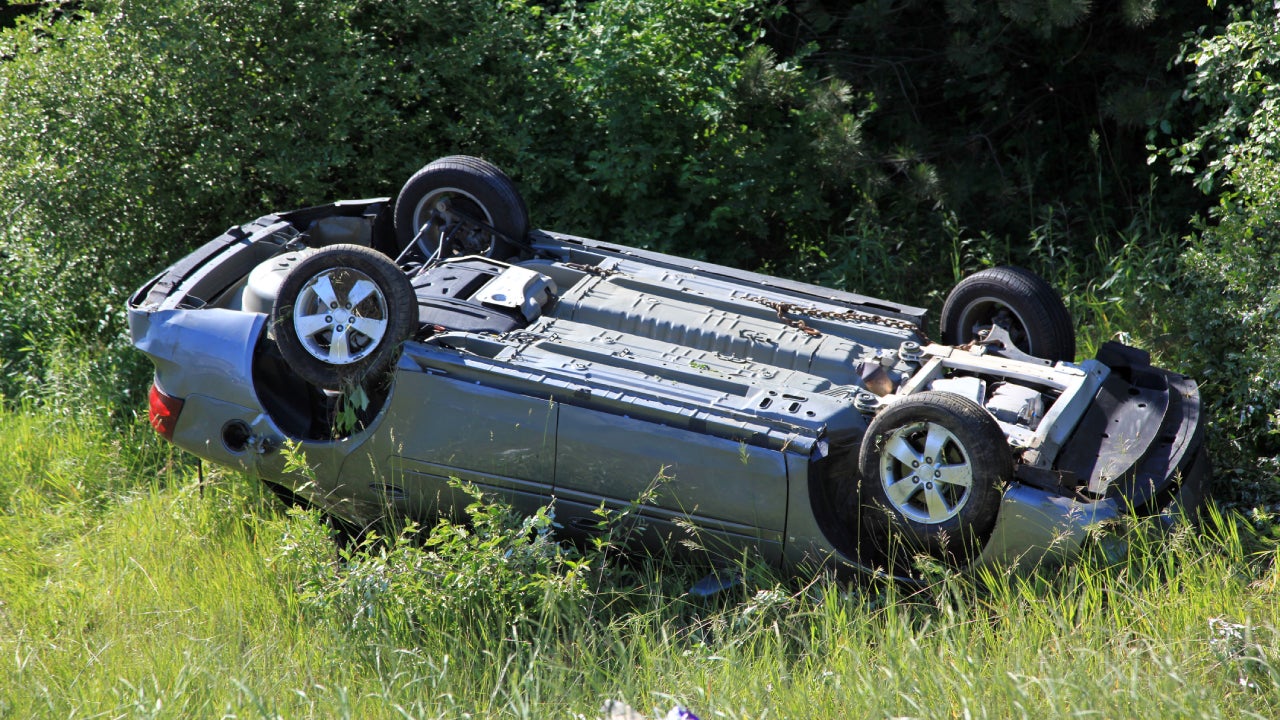What is full coverage car insurance?




Most insurance agents recommend carrying full coverage car insurance for the most financial protection, but the definition can vary based on your carrier and state. Full coverage generally refers to a car insurance policy that includes at least the state-mandated liability requirements of your state and comprehensive and collision coverage. Some drivers opt for full coverage insurance with additional coverage options and benefits, while others only need enough coverage to meet their bank loan requirements. With the average full coverage auto insurance cost at $2,638 per year as of January 2025, understanding the different components that typically make up full coverage insurance can help you craft a policy that fits your budget.
What does full coverage mean?
Full coverage car insurance means that you have coverage for damage to your vehicle. Should you cause an accident, the minimum insurance mandated by your state does not serve this purpose.
Most states require you to purchase at least minimum levels of liability coverage, and some also require you to carry additional coverage types like personal injury protection (PIP) or uninsured motorist coverage. Liability insurance is designed to cover damage and injuries others incur in an accident you cause.
Although full coverage isn’t an official term, it generally means that you have these coverage types on your policy:
- Bodily injury liability: When you are at fault for an accident and the driver or passengers in the other vehicle sustain injuries, your bodily injury liability coverage could help pay their medical expenses.
- Property damage liability: If you cause an auto accident, your property damage liability coverage is designed to help pay to repair or replace the driver’s vehicle. Damage that you cause to other property — like road signs, fences or buildings — is also typically covered.
- Collision: If you collide with something like another vehicle, a tree or a pole, your collision coverage will help pay to repair or replace your vehicle.
- Comprehensive: Often called “other-than-collision,” this section of your policy covers damage to your vehicle caused by a wide array of situations, including theft, vandalism, storm damage and animal damage.
These are the basic coverage types included in a full coverage auto policy. It’s important to keep in mind, though, that “full coverage” is not an industry-standard term. This means that the definition of full coverage may vary. Each car insurance company — and even different agencies — could have a different definition of what’s included in a full coverage policy. Some companies may automatically include one or more of the coverage types listed below in a full coverage policy, or even a minimum coverage policy if required by state law:
- Uninsured and underinsured motorist: If you are hit by a driver who does not have insurance or doesn’t have enough insurance to cover your damages, these options could help pay for your injuries and the injuries of your passengers. Depending on the state you live in, you might also be able to add uninsured motorist property damage, which will cover damage to your car caused by uninsured motorists. Some states require one or both of these coverage types.
- Medical payments or personal injury protection (PIP): Both of these coverage types help to pay for your medical bills and those of your passengers if you are injured in an auto accident, regardless of who is at fault. PIP also helps pay for lost wages and the cost of certain household services if you are unable to perform them. In some states, you will be required to purchase medical payments or PIP by law. In others, one or both of these may be available as an option.
- Roadside assistance: This optional coverage is often considered part of a full coverage package. It provides coverage for towing, lockout services, tire changes, battery jump starts for gas-powered vehicles, battery charges for electric vehicles and other situations that could leave you stranded on the side of the road.
- Car rental reimbursement: If your vehicle is not driveable due to a covered loss, this optional coverage could help to pay for the cost of a rental vehicle.
How much does full coverage insurance cost?
The average cost of a full coverage auto policy in the United States is $2,638 per year. Because of the additional financial protection that full coverage adds, it is typically much more expensive than minimum coverage car insurance, which is $767 per year on average. However, full coverage provides a greater degree of protection to your finances because it covers damage to both the other party and to your own vehicle. This means that, although your premium might be more expensive, your financial health is better protected with full coverage.
If you are looking for cheap full coverage insurance, there are several factors that you should be aware of. The company you choose, the state you live in, your driving history, the type of vehicle you drive and the coverage limits and deductibles you choose will all impact how much you pay.
Below is an example of how different liability limits impact your full coverage insurance premium.
| Liability limits | Average annual premium | Average monthly premium |
|---|---|---|
| 25/50/25 | $2,433 | $203 |
| 50/100/50 | $2,516 | $210 |
| 100/300/50 | $2,638 | $220 |
| 250/500/100 | $2,799 | $233 |
| *Please note that the rate quotes listed above include comprehensive and collision with $500 deductibles. |
Learn more: Cheapest car insurance companies
Average cost by insurance company
Car insurance companies evaluate a number of personalized factors to determine how much you will pay for car insurance. These include your driving history and the type of vehicle you drive, among other things. Not surprisingly, rates for full coverage car insurance are generally more than those for minimum coverage car insurance, but the price for full coverage varies greatly between companies. This is why getting quotes from multiple car insurance carriers is one of the best ways to make sure you are paying a competitive price.
| Company | Average annual premium for full coverage | Average annual premium for minimum coverage | Difference |
|---|---|---|---|
| Allstate | $3,297 | $917 | $2,380 |
| American Family | $2,826 | $910 | $1,916 |
| Amica | $3,180 | $763 | $2,418 |
| Auto-Owners | $1,838 | $477 | $1,361 |
| Erie | $2,149 | $701 | $1,448 |
| Farmers | $3,375 | $1,085 | $2,290 |
| Geico | $2,173 | $569 | $1,604 |
| Nationwide | $2,035 | $745 | $1,289 |
| Progressive | $2,388 | $711 | $1,676 |
| State Farm | $2,887 | $911 | $1,976 |
| USAA | $1,897 | $604 | $1,293 |
Average insurance cost by state
The average auto insurance rates for full coverage in your state may be dramatically different than the national average of $2,458. For instance, the average cost in Florida is $4,088, while residents of Vermont pay an average annual premium of just $1,412. Comparing your current policy against the average in your state may be a better measurement of whether or not you’re getting the best deal.
| State | Average annual premium for full coverage | Average annual premium for minimum coverage |
|---|---|---|
| Alabama | $2,056 | $505 |
| Alaska | $2,387 | $505 |
| Arizona | $2,744 | $827 |
| Arkansas | $2,473 | $497 |
| California | $2,973 | $715 |
| Colorado | $3,144 | $585 |
| Connecticut | $2,720 | $1,072 |
| Delaware | $2,771 | $964 |
| Florida | $4,171 | $1,135 |
| Georgia | $2,939 | $1,042 |
| Hawaii | $1,689 | $413 |
| Idaho | $1,454 | $369 |
| Illinois | $2,315 | $633 |
| Indiana | $1,723 | $405 |
| Iowa | $1,857 | $321 |
| Kansas | $2,518 | $575 |
| Kentucky | $2,747 | $757 |
| Louisiana | $3,978 | $1,025 |
| Maine | $1,627 | $429 |
| Maryland | $2,793 | $1,003 |
| Massachusetts | $2,092 | $536 |
| Michigan | $3,131 | $873 |
| Minnesota | $2,528 | $725 |
| Mississippi | $2,149 | $504 |
| Missouri | $2,578 | $663 |
| Montana | $2,394 | $409 |
| Nebraska | $2,332 | $505 |
| Nevada | $3,562 | $1,149 |
| New Hampshire | $1,823 | $496 |
| New Jersey | $2,785 | $1,112 |
| New Mexico | $2,193 | $442 |
| New York | $3,916 | $1,685 |
| North Carolina | $2,047 | $619 |
| North Dakota | $1,798 | $402 |
| Ohio | $1,596 | $433 |
| Oklahoma | $2,741 | $557 |
| Oregon | $1,984 | $836 |
| Pennsylvania | $2,467 | $535 |
| Rhode Island | $2,946 | $934 |
| South Carolina | $2,022 | $640 |
| South Dakota | $2,329 | $373 |
| Tennessee | $2,086 | $521 |
| Texas | $2,545 | $729 |
| Utah | $2,131 | $786 |
| Vermont | $1,470 | $317 |
| Virginia | $2,136 | $699 |
| Washington | $1,845 | $558 |
| Washington, D.C. | $2,890 | $840 |
| West Virginia | $2,175 | $567 |
| Wisconsin | $1,918 | $448 |
| Wyoming | $1,747 | $263 |
Is full coverage insurance worth it?
Everyone’s financial situation is different, but in many cases, full coverage car insurance is worth it. Full coverage is generally recommended if your vehicle is new or relatively expensive, if you do not have the finances to repair or replace your damaged or totaled vehicle or if the likelihood of damage is higher than average, as it could be with a teen driver.
And if you have a loan or lease, the terms of your financial agreement will likely stipulate that you carry full coverage. Financial institutions require full coverage because when purchasing a car with a loan or leasing a vehicle, you do not fully own it — a bank or other financial institution owns at least part of the car (until you pay off the loan or buy out the lease). Because of this, lenders require full coverage to ensure that you will be able to pay off the balance of your lien if the vehicle is totaled. In situations of a lease, many banks require drivers to carry higher liability limits of 100/300/50.
Frequently asked questions
Methodology
Bankrate utilizes Quadrant Information Services to analyze January 2024 rates for all ZIP codes and carriers in all 50 states and Washington, D.C. Rates are weighted based on the population density in each geographic region. Quoted rates are based on a single, 40-year-old male and female driver with a clean driving record, good credit and the following full coverage limits:
- $100,000 bodily injury liability per person
- $300,000 bodily injury liability per accident
- $50,000 property damage liability per accident
- $100,000 uninsured motorist bodily injury per person
- $300,000 uninsured motorist bodily injury per accident
- $500 collision deductible
- $500 comprehensive deductible
To determine minimum coverage limits, Bankrate used minimum coverage that meets each state’s requirements. Our base profile drivers own a 2023 Toyota Camry, commute five days a week and drive 12,000 miles annually.
These are sample rates and should only be used for comparative purposes.
You may also like


What is total loss car insurance?

What is a car insurance deductible?

What is a comprehensive car insurance claim?
